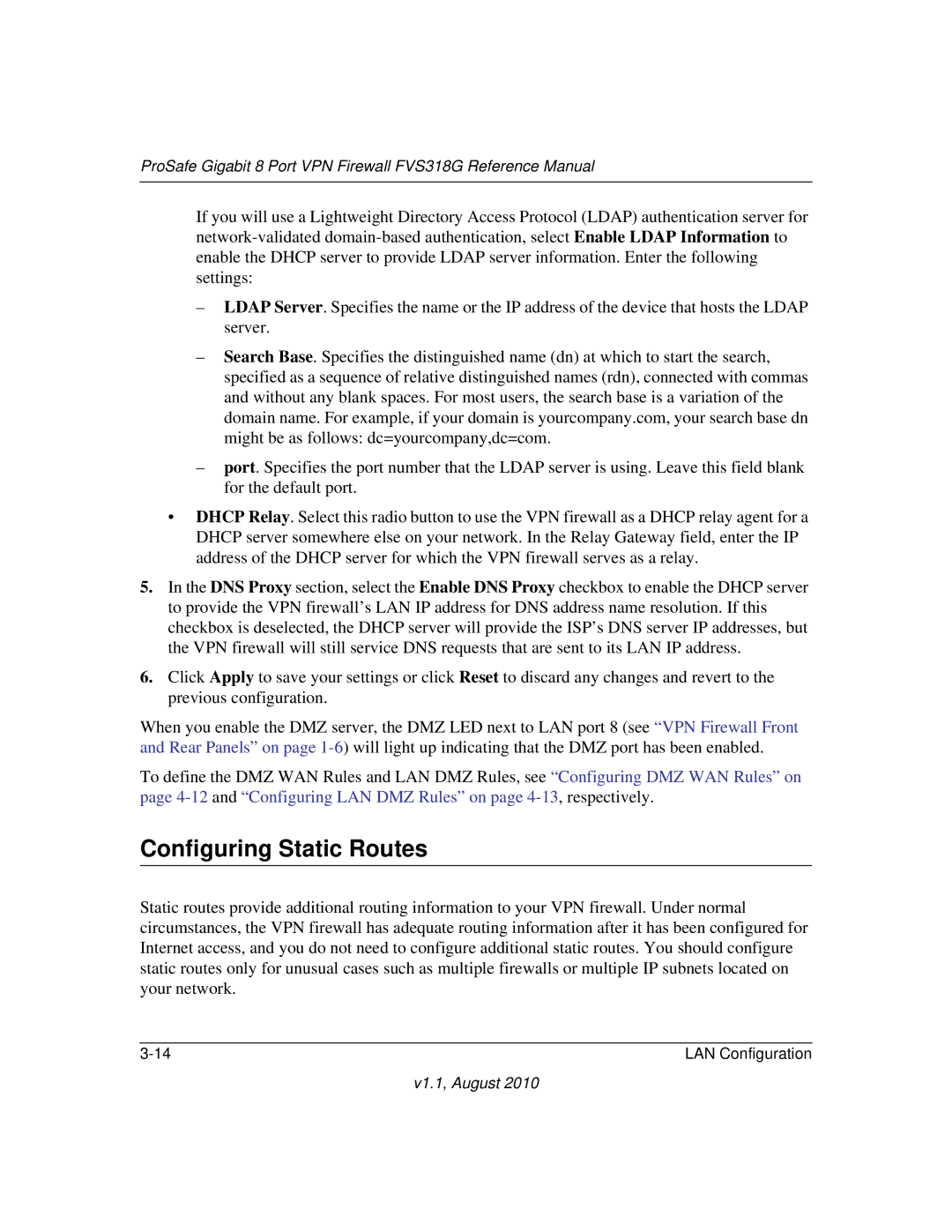
ProSafe Gigabit 8 Port VPN Firewall FVS318G Reference Manual
If you will use a Lightweight Directory Access Protocol (LDAP) authentication server for
–LDAP Server. Specifies the name or the IP address of the device that hosts the LDAP server.
–Search Base. Specifies the distinguished name (dn) at which to start the search, specified as a sequence of relative distinguished names (rdn), connected with commas and without any blank spaces. For most users, the search base is a variation of the domain name. For example, if your domain is yourcompany.com, your search base dn might be as follows: dc=yourcompany,dc=com.
–port. Specifies the port number that the LDAP server is using. Leave this field blank for the default port.
•DHCP Relay. Select this radio button to use the VPN firewall as a DHCP relay agent for a DHCP server somewhere else on your network. In the Relay Gateway field, enter the IP address of the DHCP server for which the VPN firewall serves as a relay.
5.In the DNS Proxy section, select the Enable DNS Proxy checkbox to enable the DHCP server to provide the VPN firewall’s LAN IP address for DNS address name resolution. If this checkbox is deselected, the DHCP server will provide the ISP’s DNS server IP addresses, but the VPN firewall will still service DNS requests that are sent to its LAN IP address.
6.Click Apply to save your settings or click Reset to discard any changes and revert to the previous configuration.
When you enable the DMZ server, the DMZ LED next to LAN port 8 (see “VPN Firewall Front and Rear Panels” on page
To define the DMZ WAN Rules and LAN DMZ Rules, see “Configuring DMZ WAN Rules” on page
Configuring Static Routes
Static routes provide additional routing information to your VPN firewall. Under normal circumstances, the VPN firewall has adequate routing information after it has been configured for Internet access, and you do not need to configure additional static routes. You should configure static routes only for unusual cases such as multiple firewalls or multiple IP subnets located on your network.
LAN Configuration |
